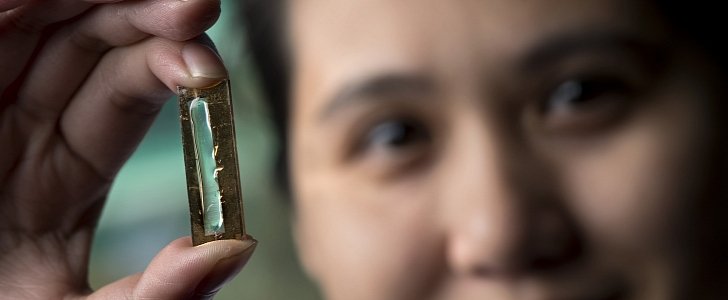If the future does prove to be electric, then we're going to rely heavily on batteries. Not that we don't already, but switching to alternative sources of power will require the use of a never-before-seen quantity of batteries.
Apart from the fact that they're heavy and they need expensive or rare materials to be built, current power storing units have another very big disadvantage: their performances dim over time. A lithium-ion battery will begin to lose its performance after a few thousand charging cycles (even though your smartphone would disagree with this number, calling it way too optimistic), up to the point where it will no longer be usable.
If it's a small electronic device, that can be replaced with relative ease. In the case of a car, however, it is more difficult as well as more expensive. So a battery that will not lose its properties over time would be a great addition to the booming world of EVs.
The reason Li-Ion batteries don't keep their properties is that lithium deposits build up on the electrodes, which prevents the battery from holding the charge. Knowing what the problem is means we're halfway through to finding a solution, and that might have just happened. By accident, nevertheless.
A lot of humanity's inventions were found by accident, so there's nothing new in that. Serendipity plays a significant role, but the researchers need to give fate a chance to spark a great innovation by at least trying to work something out. Nothing was discovered while sitting on the couch in front of a TV.
A group of scientists from the University of California, Irvine might have accidentally come across a new type of battery that can go through hundreds of thousands of recharging cycles without losing any of its initial characteristics, the UCI News reports. To solve the problem, the researchers used nanowires as electrodes, but since they are fragile, the repetitive charging/discharging cycles eventually break them.
The researchers then used a manganese dioxide coating for the nanowires, dipping the whole assembly into a gel electrolyte. Long story short, the new battery they obtained was able to go through 200,000 cycles without any changes in its operating parameters. In case it's not clear enough, this is very big news.
Obviously, the technology needs more time in the lab until it can make it out into the world, but if it proves to be successful, it could mean a huge breakthrough for everything using electric power on the move. Right now, worn batteries from the car industry are used to create large storing units for wind and solar power before they meet their unavoidable demise. Soon, though, recycling batteries might become a thing of the past. Fingers crossed.
If it's a small electronic device, that can be replaced with relative ease. In the case of a car, however, it is more difficult as well as more expensive. So a battery that will not lose its properties over time would be a great addition to the booming world of EVs.
The reason Li-Ion batteries don't keep their properties is that lithium deposits build up on the electrodes, which prevents the battery from holding the charge. Knowing what the problem is means we're halfway through to finding a solution, and that might have just happened. By accident, nevertheless.
A lot of humanity's inventions were found by accident, so there's nothing new in that. Serendipity plays a significant role, but the researchers need to give fate a chance to spark a great innovation by at least trying to work something out. Nothing was discovered while sitting on the couch in front of a TV.
A group of scientists from the University of California, Irvine might have accidentally come across a new type of battery that can go through hundreds of thousands of recharging cycles without losing any of its initial characteristics, the UCI News reports. To solve the problem, the researchers used nanowires as electrodes, but since they are fragile, the repetitive charging/discharging cycles eventually break them.
The researchers then used a manganese dioxide coating for the nanowires, dipping the whole assembly into a gel electrolyte. Long story short, the new battery they obtained was able to go through 200,000 cycles without any changes in its operating parameters. In case it's not clear enough, this is very big news.
Obviously, the technology needs more time in the lab until it can make it out into the world, but if it proves to be successful, it could mean a huge breakthrough for everything using electric power on the move. Right now, worn batteries from the car industry are used to create large storing units for wind and solar power before they meet their unavoidable demise. Soon, though, recycling batteries might become a thing of the past. Fingers crossed.


